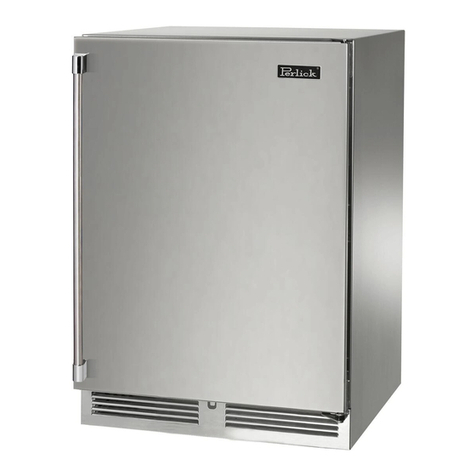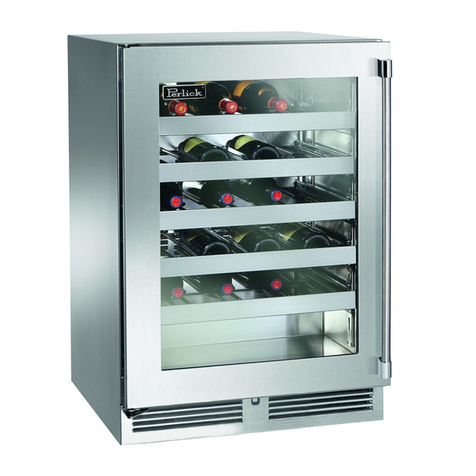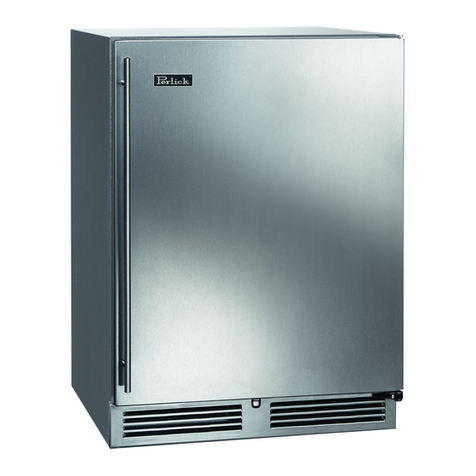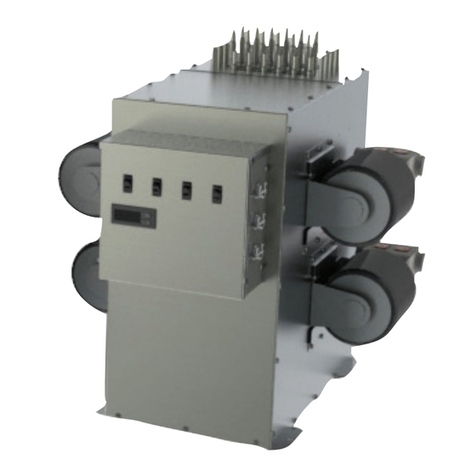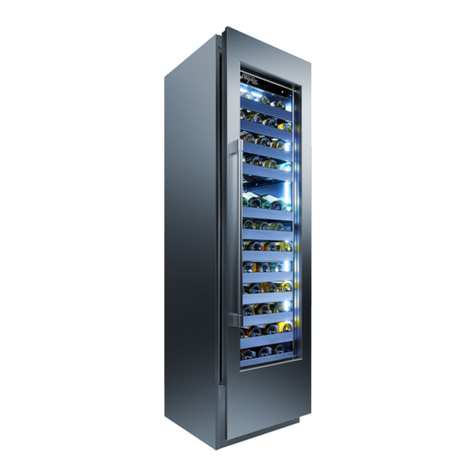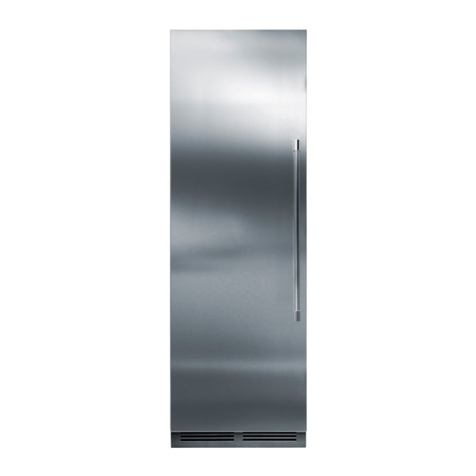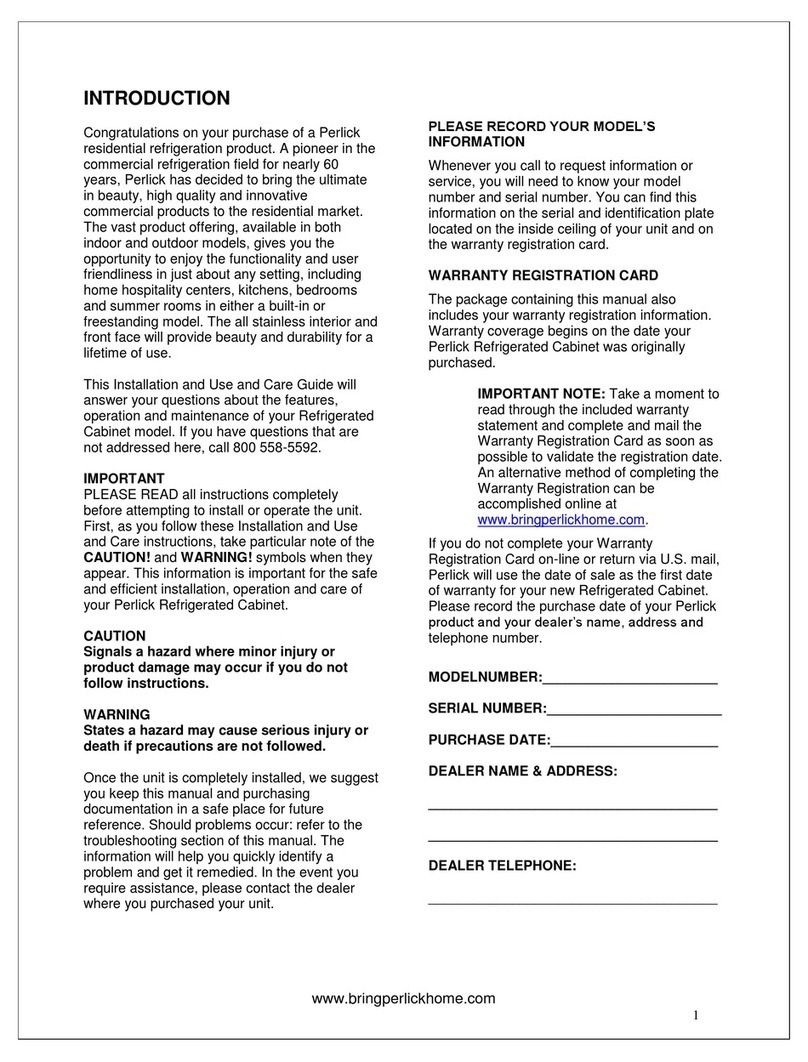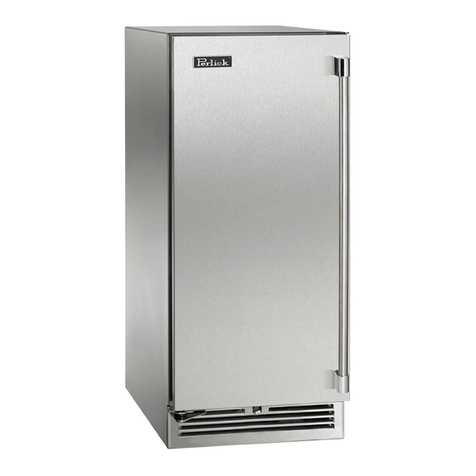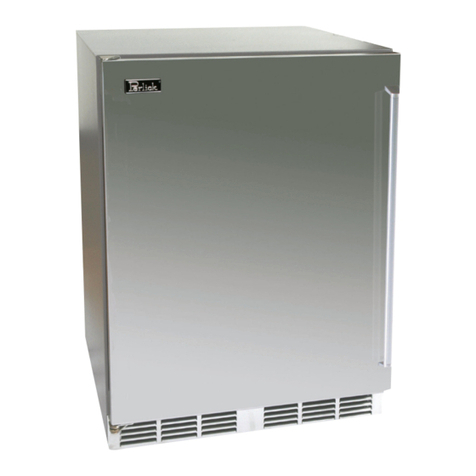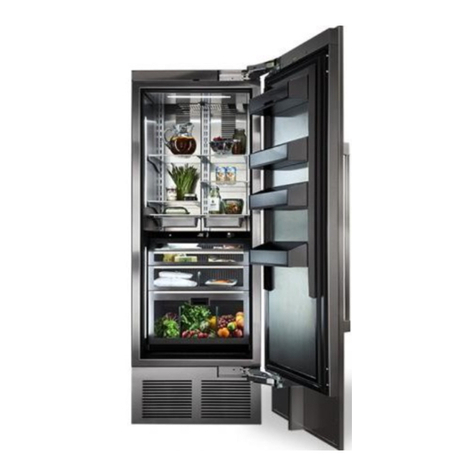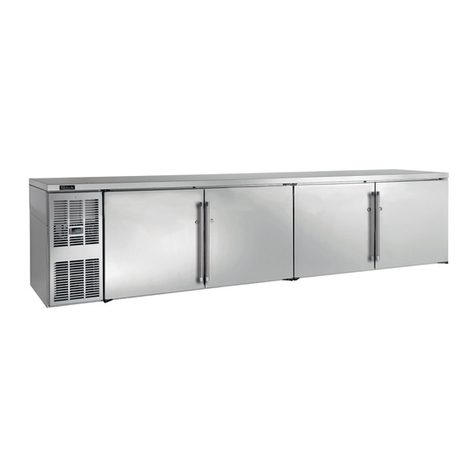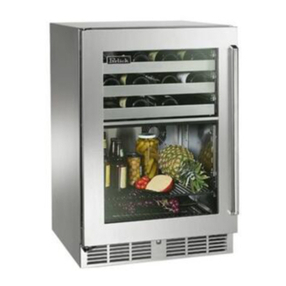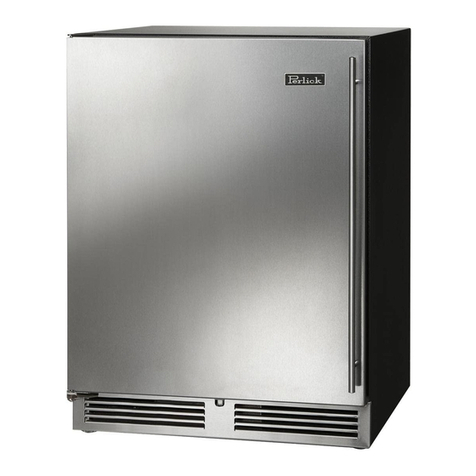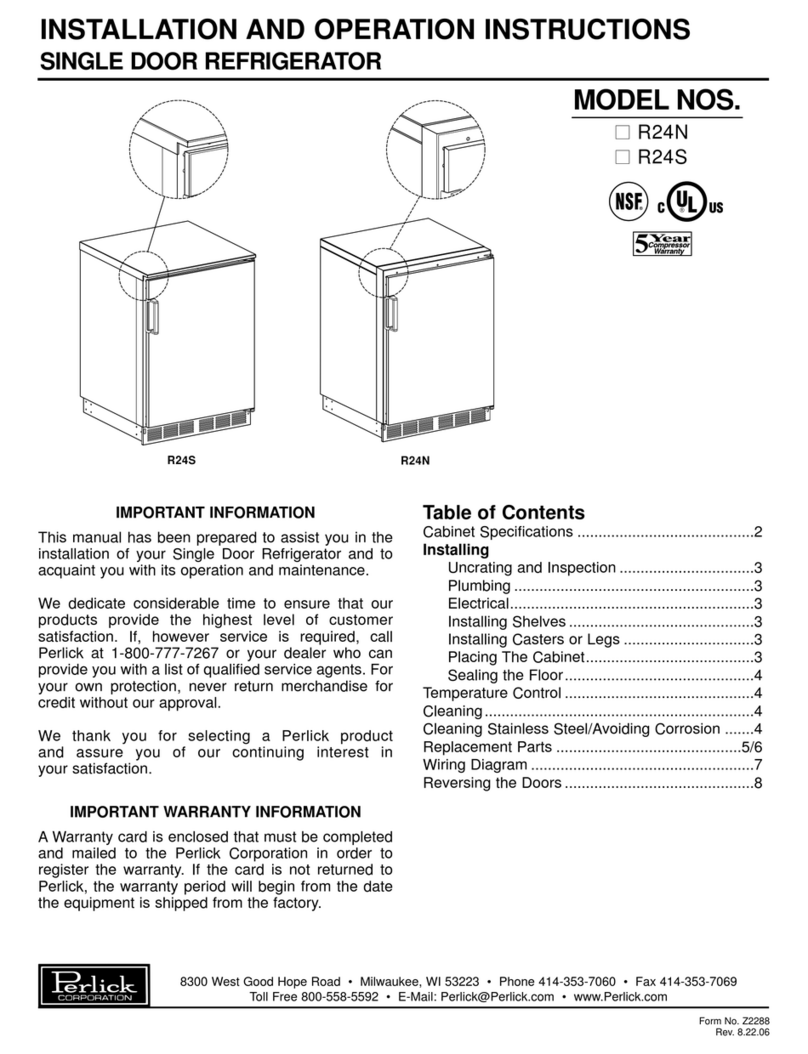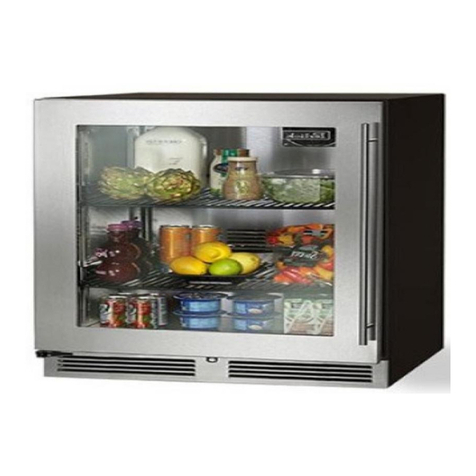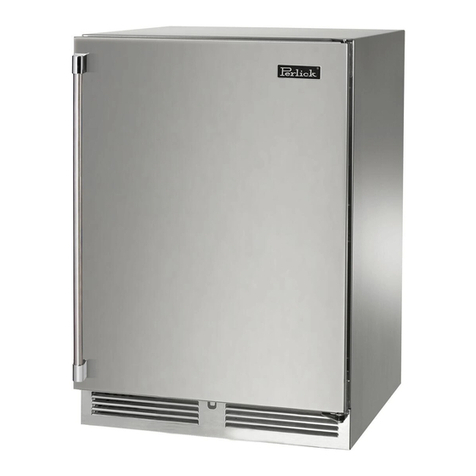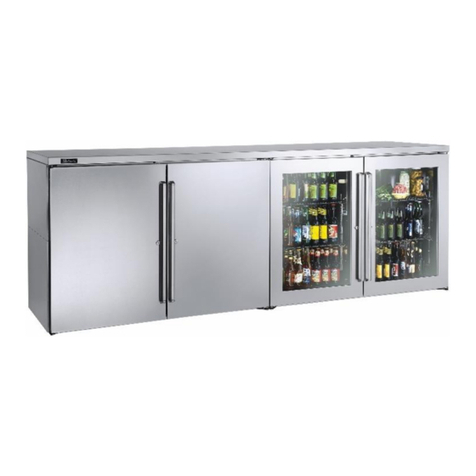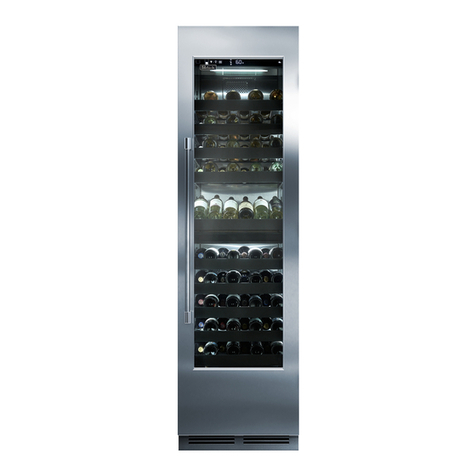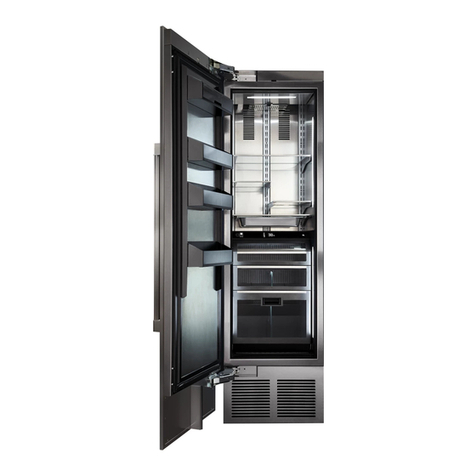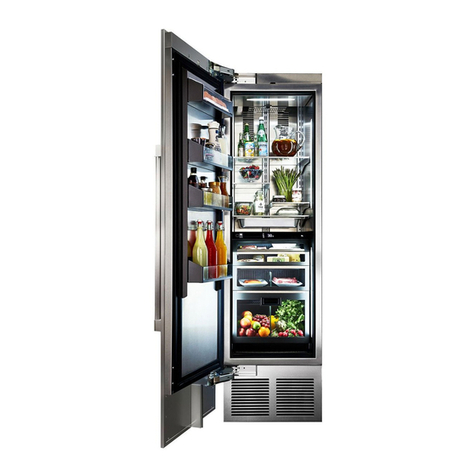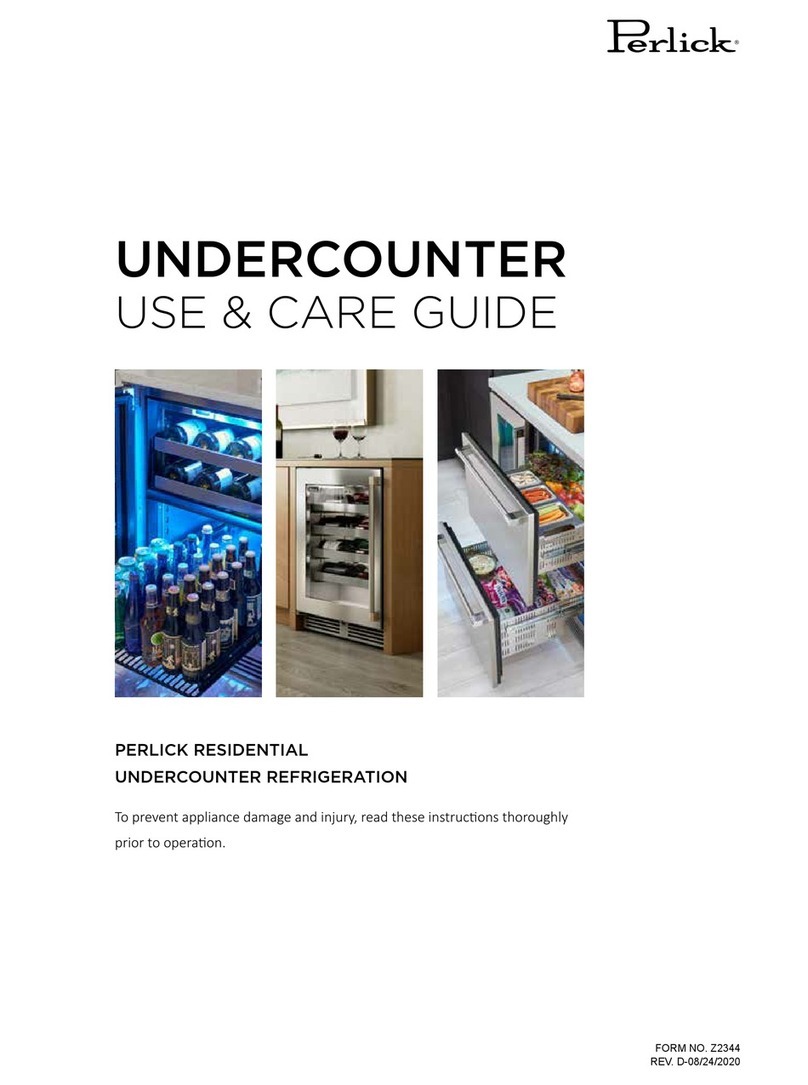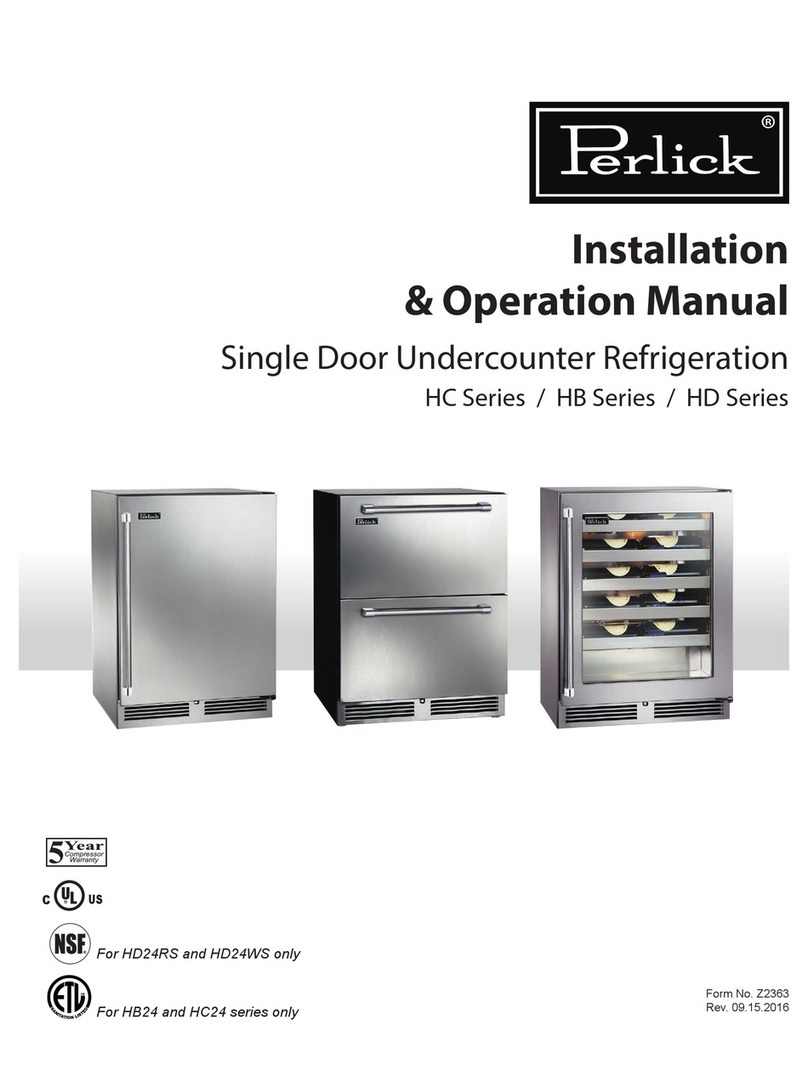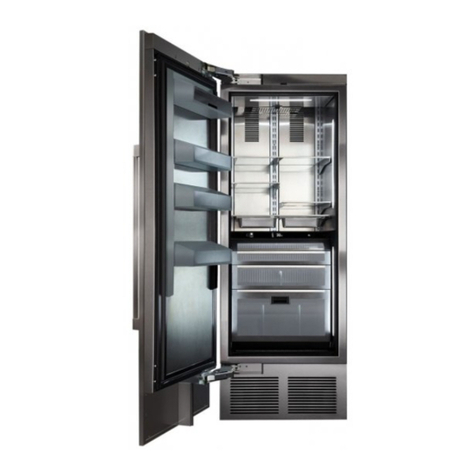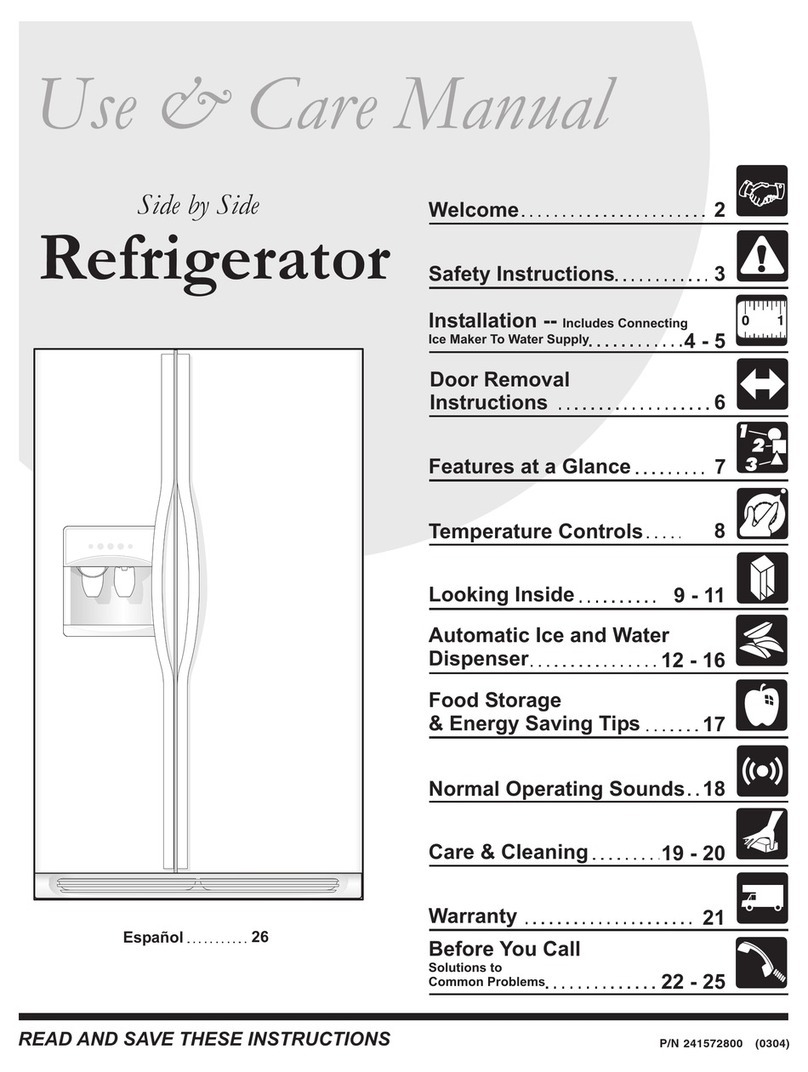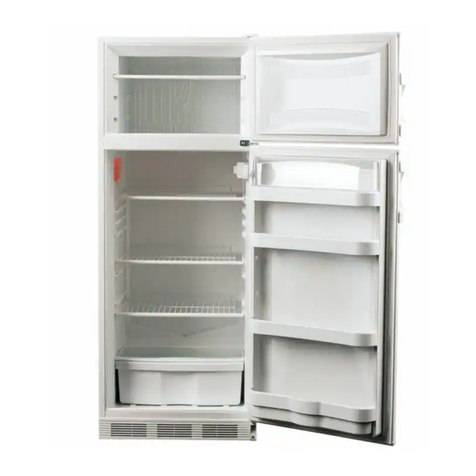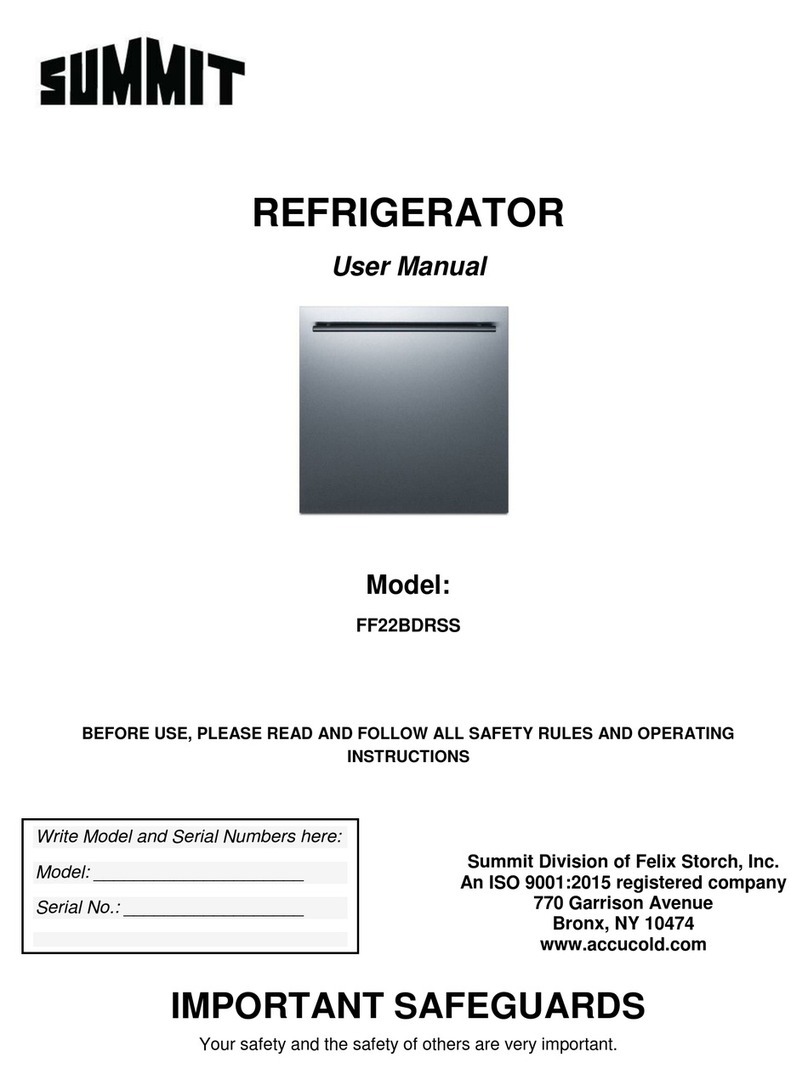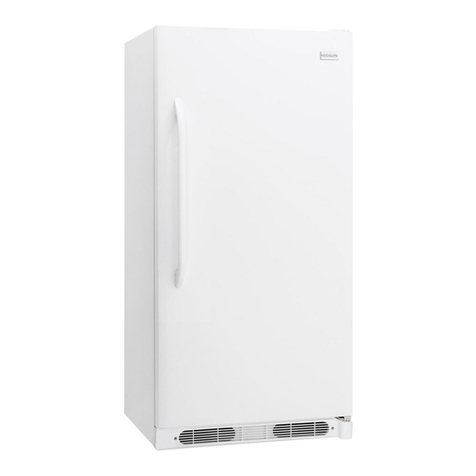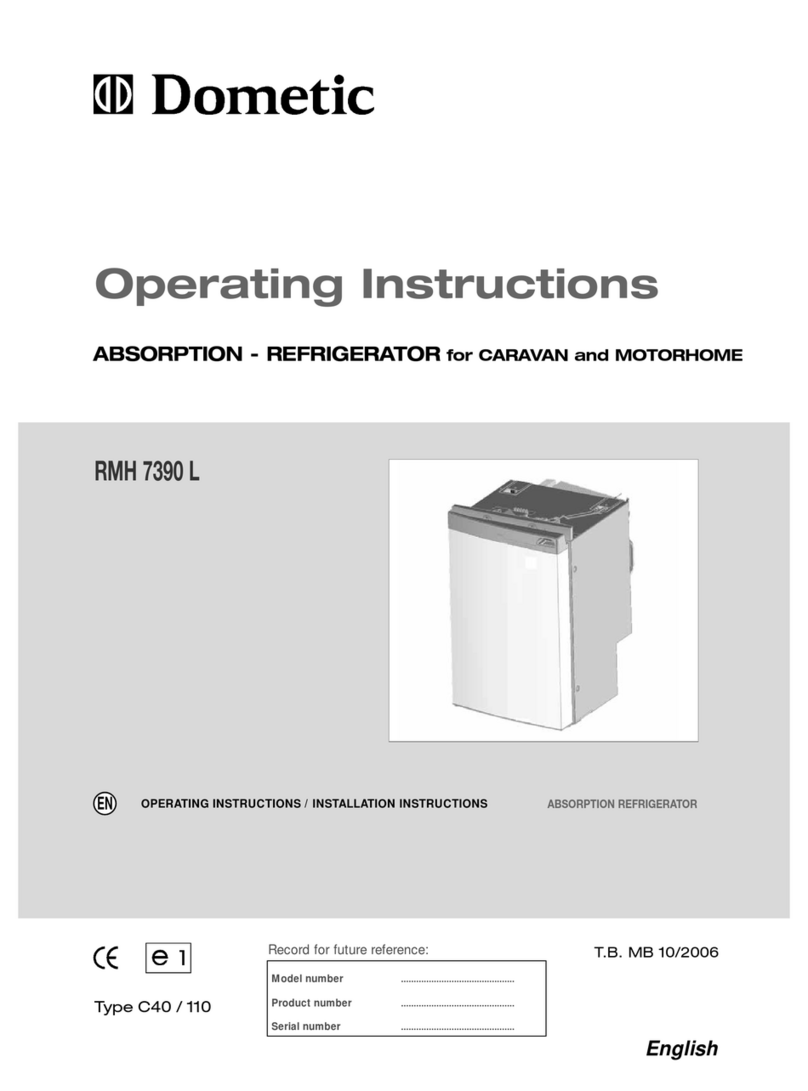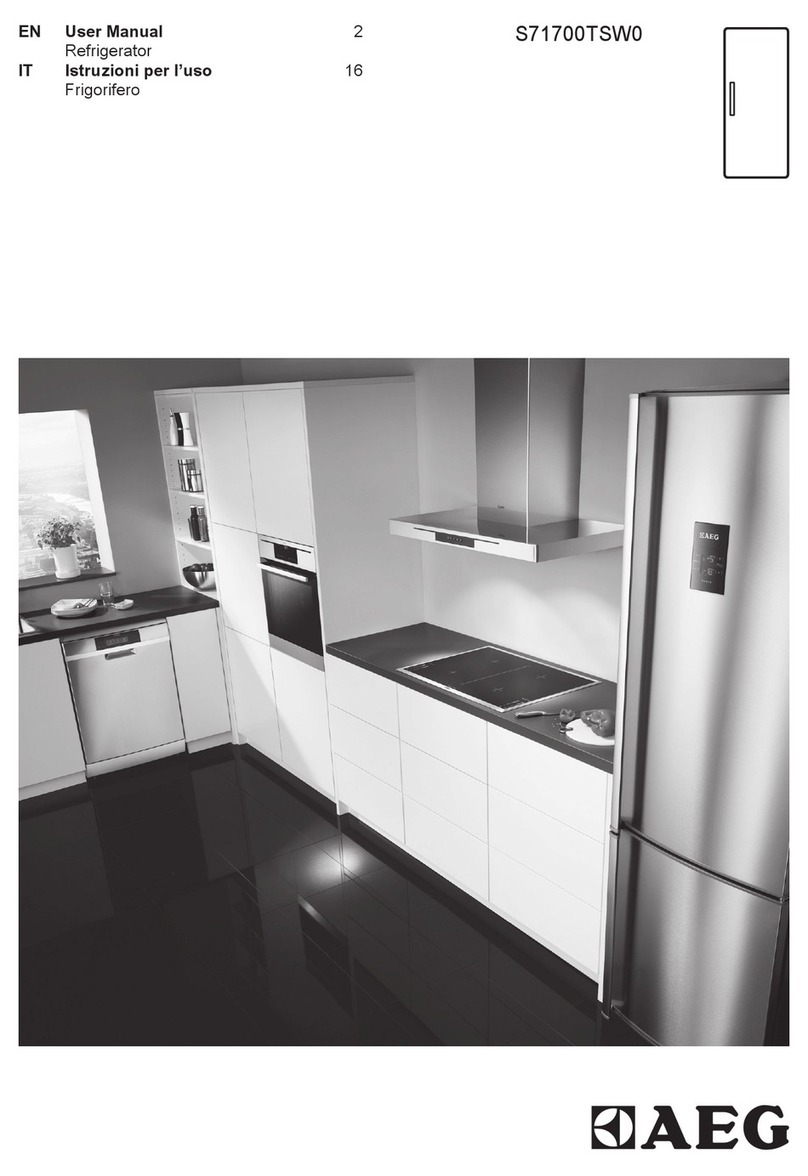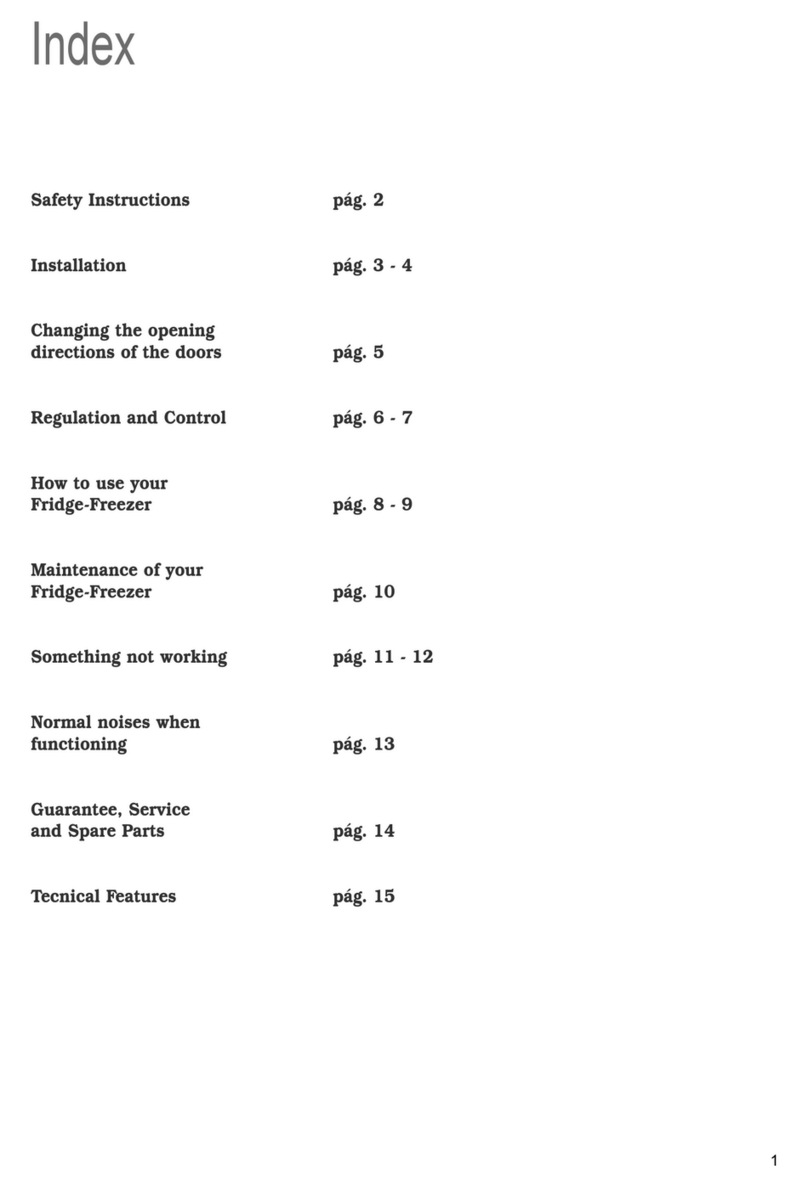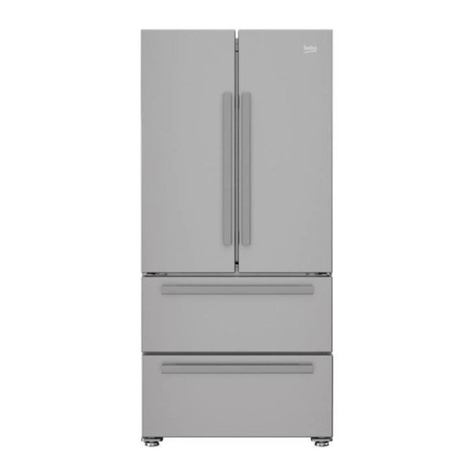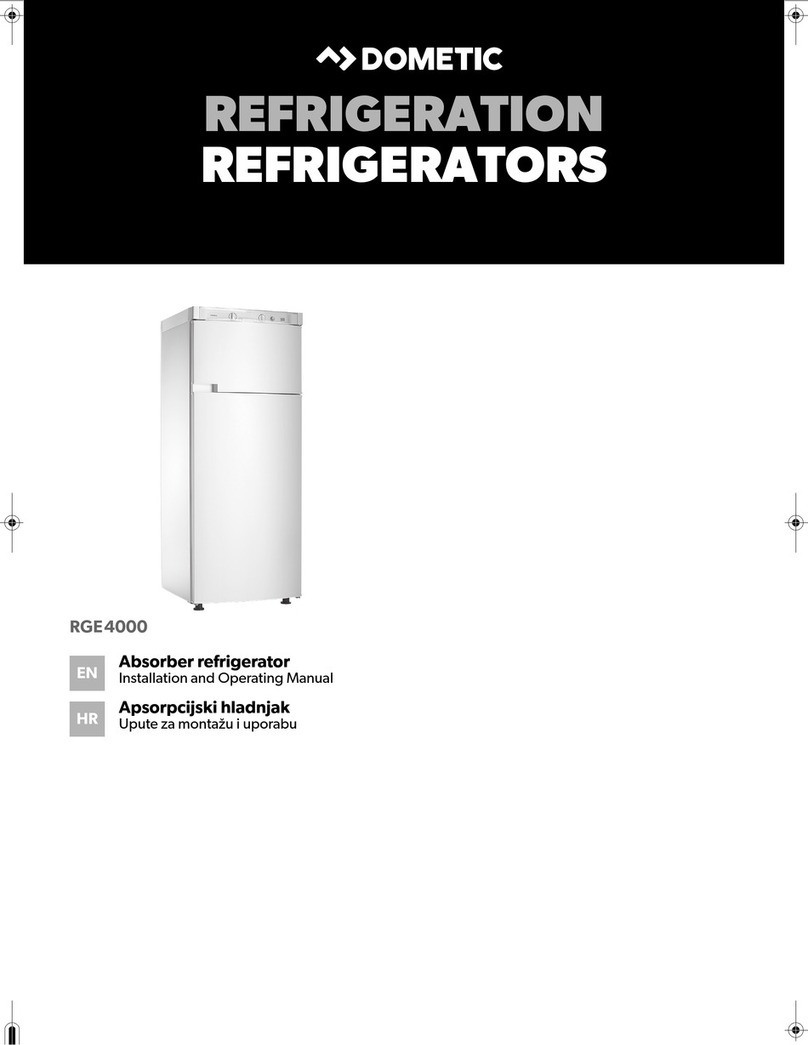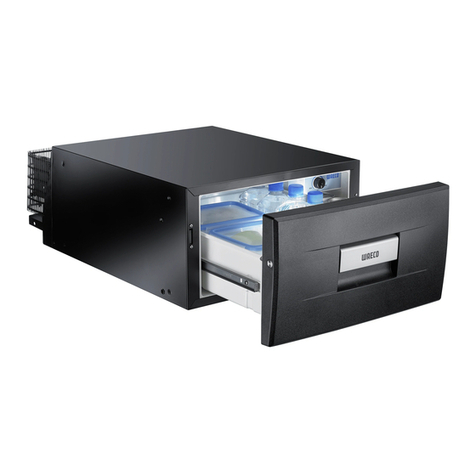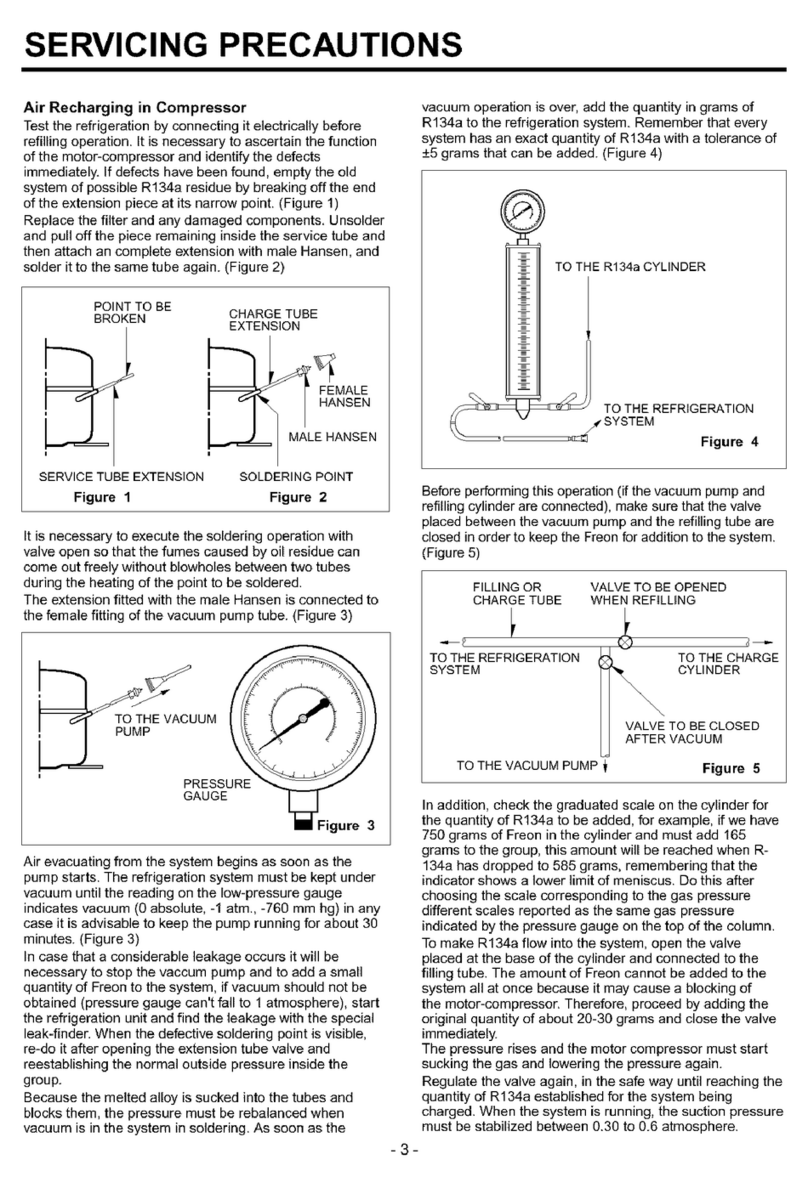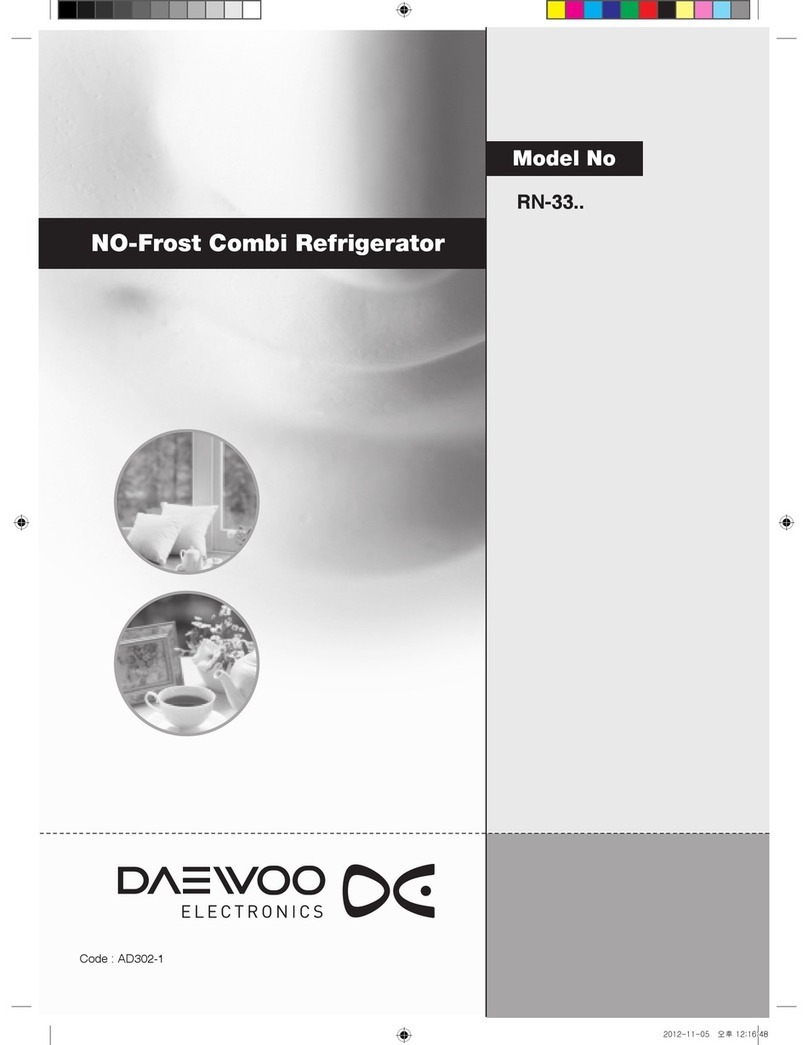
Use and Care Guide
Printed in USA 7 0213
MAINTENANCE
DANGER Never attempt to repair or
perform maintenance on
the unit until the main electrical power to the
unit has been disconnected!
Light Bulb Replacement (C-Series, ADA-
Compliant & Shallow-Depth)
To replace a defective or burnt out bulb, remove
the glass light cover by pulling out on the cover,
unscrew the bulb and replace it with an identical
orsmallerbulb.The Perlickreplacementbulbpart
number is 67026.
LED Replacement (Signature Series)
Call your Perlick Factory Authorized Service
Center. For the location of the Service Center
in your area, contact your selling dealer, inquire
via the web at www.perlick.com, Email us at
5592.
Stainless Steel Care & Cleaning
General
Stainless steel is a “passive” metal because it
contains other metals like chromium, nickel and
manganese that stabilize the atoms. Chromium
provides an invisible passive film that covers the
steelsurface,actingasa shield against corrosion.
Aslongasthefilmisintactandnotcontaminated,
the metal is passive and stainless. If the passive
filmofstainless steel hasbeenbroken,equipment
can start to corrode and rust.
Three materials or processes can break down
stainlesssteel’spassive layer andallowcorrosion
to occur:
• Mechanical abrasion
• Deposits and water
• Chlorides
Mechanical abrasion refers to items that will
scratch a steel surface. Steel pads, wire brushes
and scrapers are prime examples.
Water comesoutofthefaucet in varying degrees
of hardness. Hard water may leave spots. When
allowed to sit, these deposits will break down the
passive chromium layer and rust stainless steel.
Other deposits from food preparation must be
promptly removed with an appropriate cleaning
agent.
Chlorides are found nearly everywhere. They
are in water, food and table salt. Household and
industrial cleaners are the worst offenders.
Preventing Stainless Steel Rust
Use the proper tools. Use non-abrasive tools to
clean stainless steel products. Soft cloths and
plastic scouring pads will not harm the steel’s
passive layer.
Clean with polish lines. Some stainless steels
have visible polishing lines or “grain”. When
visiblelinesarepresent,alwaysscrubinamotion
parallel to the lines. When the grain cannot be
seen, polish in a consistent straight pattern and
not in a circular motion.
Use alkaline, alkaline chlorinated or non-chloride
containing cleaners. While many traditional
cleaners are loaded with chlorides, the industry
is providing an ever-increasing choice of non-
chloride cleaners. If you are not sure of chloride
content in the cleaner being used, contact your
cleaner supplier. If your present cleaner contains
chlorides, ask your supplier for an alternative.
Avoid cleaners containing quaternary salt; it also
can attack stainless steel and cause pitting and
rusting.
Keep food equipment clean. Use alkaline,
alkaline chlorinated or non-chloride cleaners at
recommendedstrength.Cleanfrequentlytoavoid
build-upofhard,stubbornstains.The single most
likely cause of damage is chlorides in the water.
Remember, adding heat to cleaners that contain
chlorides dramatically increases their effect on
stainless steel.
If chlorinated cleaners are used, immediately
rinse and wipe equipment and supplies dry. The
sooner you wipe standing water, especially when
itcontainscleaningagents, the better.Afterwiping
equipment down, allow it to air dry. Oxygen helps
maintain the stainless steel passive film.

